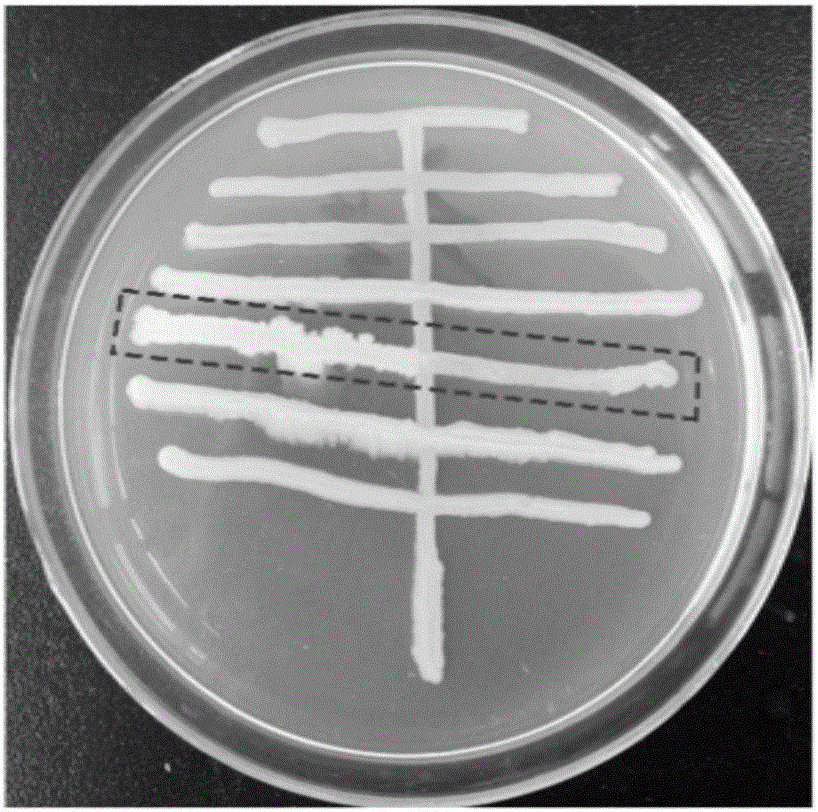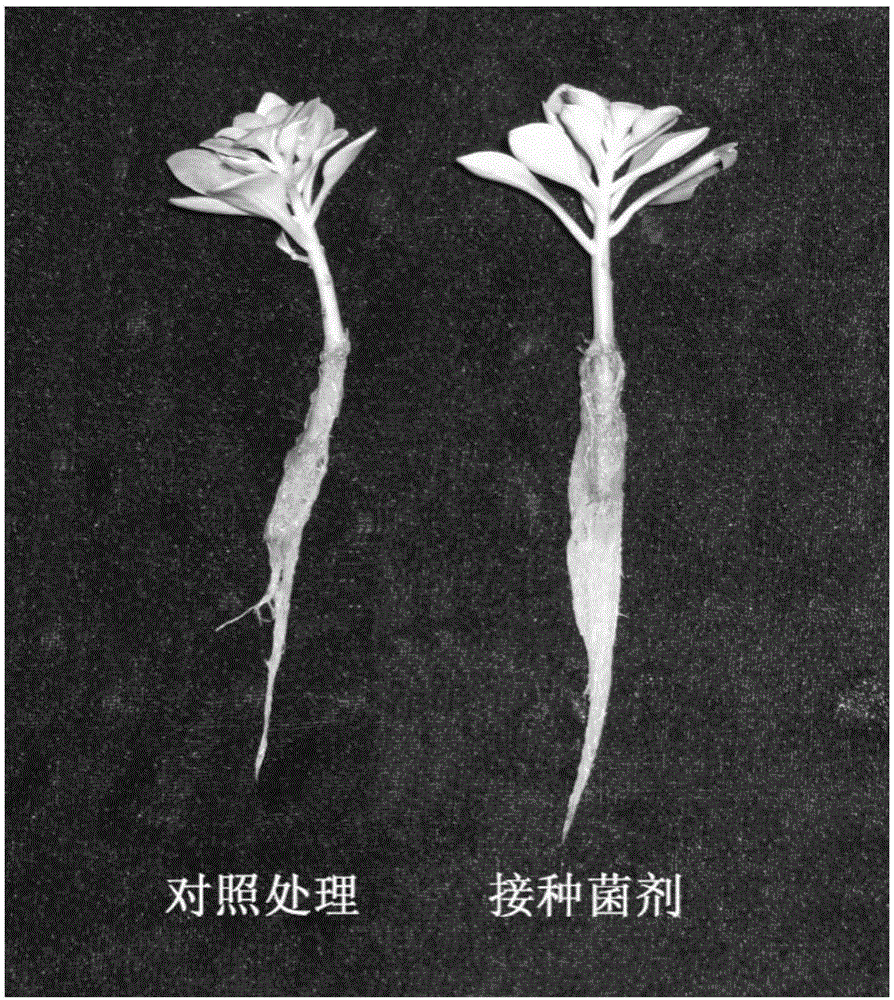Complex endophytic bacterial inoculant and application thereof in phytoremediation of heavy metal contaminated soil
A technology of endophytic bacteria and heavy metals, applied in the field of phytoremediation, can solve the problems of small biomass, slow growth, weak adaptability, etc., and achieve the effect of enhancing absorption capacity, promoting growth and improving efficiency
- Summary
- Abstract
- Description
- Claims
- Application Information
AI Technical Summary
Problems solved by technology
Method used
Image
Examples
Embodiment 1
[0049] Example 1 promotes the overall characteristics of the composite endophytic bacterial agent for Sedum sedum bioremediation
[0050] Inoculate 200 μL of the prepared bacterial agent into 100 mL medium, incubate at 35°C for 36 hours, and a part of the obtained bacterial agent is used for preservation. Add 300 μL sterilized glycerol and 700 μL logarithmic phase bacterial solution to a 1.5 mL sterile centrifuge tube. Store at -80°C (can be stored for 2 years), and the remaining liquid bacterial agents are identified for key physiological and biochemical indicators.
[0051] 1. Identification of pathogenicity
[0052] Inoculate the above-mentioned bacterial solution to fresh damaged leaves (Sedum sedum, tobacco, rapeseed), use sterile water as a control, and no leaf disease characteristics are found; extract 100 μL of bacterial solution with a sterile syringe and inject it into fresh and healthy onion stems , using sterile water as a control, cultured at 30°C for one week, n...
Embodiment 2
[0071] Example 2 Effect of Endophytic Bacteria Compound Bacteria on the Growth of Sedum Sedum and Heavy Metal Soil Remediation
[0072] The composition of the nutrient solution is: K 2 SO 4 , 0.7mmol / L; KCl, 0.1mmol / L; Ca(NO 3 ) 2 4H 2O, 2mmol / L; MgSO 4 ·7H 2 O, 0.5mmol / L; KH 2 PO 4 , 0.1mmol / L; H 3 BO 3 , 10μmol / L; MnSO 4 ·H 2 O, 0.5 μmol / L; ZnSO 4 ·7H 2 O, 1μmol / L; (NH 4 ) 4 MoO 24 4H2O, 0.01μmol / L; FeSO 4 ·7H 2 O dissolved in boiling 20 μmol / L Na 2 ·In EDTA solution, 20μmol / L. Adjust the nutrient (pH 5.8) with NaOH or HCl
[0073] (1) Hydroponic environment
[0074] Rapid propagation of Sedum sedum by hydroponics. Cut off the newly born branches of Sedum sedum, each about 10cm long, leaving only 5-8 leaves at the top of the branches, insert them into 0.1 times the hydroponic nutrient solution, the temperature is 23-25°C, and the light conditions are 200-200°C. 300μE / m 2 s, after 3 weeks, the branches grow a little root, then culture with 1 times of t...
Embodiment 4
[0085] Embodiment 4 promotes the application of Sedum sedum bioremediation endophytic bacteria
[0086] Rapid propagation of Sedum sedum seedlings (method with reference to embodiment 3): get Sedum sedum top branch and take root in nutrient solution for about 45 days. LB liquid medium cultured PLSa01 bacterial agent overnight, washed the medium with sterile water, and pressed 10 5 CFU were inoculated into rooting seedling baskets, and cultured with aeration for 1 week. At this time, the endophytic bacteria of Sedum sedatus will colonize inside the root and form a symbiotic relationship with the root system.
[0087] Cutting propagation: 1 week after Sedum inoculated with endophytic bacteria, the endophytic bacteria will colonize the inside of the roots, plant Sedum sedum seedlings in heavy metal compound polluted mine soil, the seedling density is 70~ 100 plants. It grows slowly when it is first planted, and it is the growing season from September to December and March to J...
PUM
 Login to View More
Login to View More Abstract
Description
Claims
Application Information
 Login to View More
Login to View More - R&D
- Intellectual Property
- Life Sciences
- Materials
- Tech Scout
- Unparalleled Data Quality
- Higher Quality Content
- 60% Fewer Hallucinations
Browse by: Latest US Patents, China's latest patents, Technical Efficacy Thesaurus, Application Domain, Technology Topic, Popular Technical Reports.
© 2025 PatSnap. All rights reserved.Legal|Privacy policy|Modern Slavery Act Transparency Statement|Sitemap|About US| Contact US: help@patsnap.com



